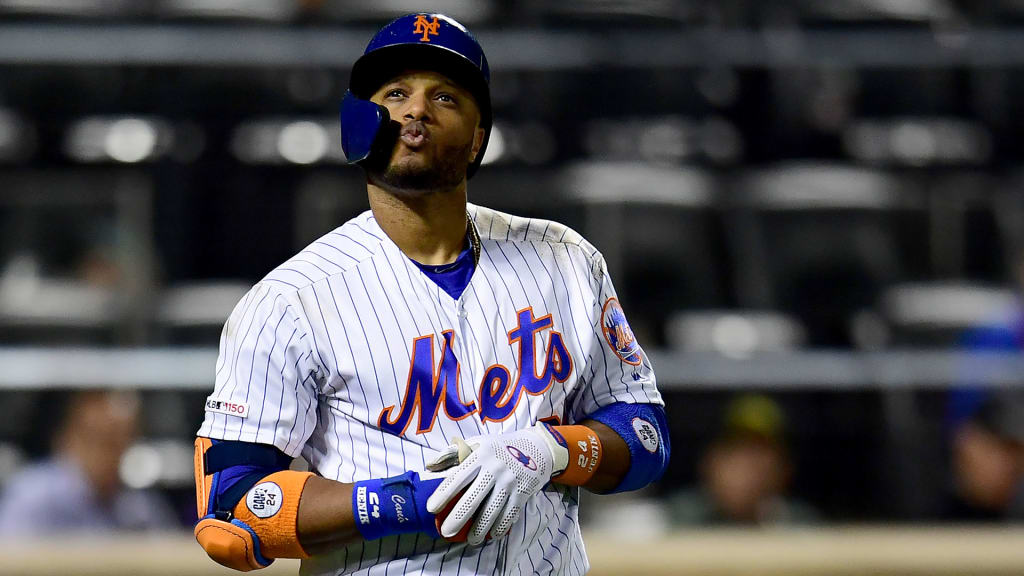
NEW YORK -- The Mets’ primary target in their seven-player megadeal with the Mariners last December may have been Edwin Díaz, but new general manager Brodie Van Wagenen would not have sprung the trade had he not also believed in Robinson Canó. As one of Canó’s former agents, Van Wagenen knew the infielder -- his pros, his cons, his skills, his aspirations -- as intimately as any player in baseball.
The GM believed that, at age 36, Canó could not only avoid the health issues that plague so many players in their mid-30s, but also remain a productive, middle-of-the-order bat for years to come. Yet in his first season in Flushing, Canó accomplished neither. He landed on the injured list three times, finishing with his worst numbers in 15 big league seasons.
“It kind of hurts your feelings as a player,” Canó said. “If I look back, if I was healthy, it maybe would have been a different season.”
Frustrating Canó was the fact that at times, he was the dominant player he has always been. Canó was the story on Opening Day, homering and turning a key double play in a win over the Nationals. Before hitting the IL for a third time in early August, Canó strung together four consecutive multihit games with five extra-base hits.
Going forward, the Mets can only hope he finds a way to stay both healthy and successful on a more consistent basis. Under contract for four more seasons, Canó will be the starting second baseman in Flushing for the foreseeable future. At age 37, a vintage campaign will not be easy for him to achieve. The Mets know that. A more appropriate goal may be mere improvement over 2019.
What Went Right?
When healthy, Canó produced, particularly in the second half. Canó slashed .284/.339/.541 after the All-Star break, compared to .240/.287/.360 before it. Defensively, Canó remained an asset at second base, as he has been for most of his career. In the clubhouse, he became a leader and a mentor for several younger players -- most prominently shortstop Amed Rosario.
What Went Wrong?
Canó landed on the injured list three times with leg injuries and missed several other games due to hand contusions. Worse, those injuries tended to occur at times when Canó was finding his stroke at the plate, stunting his momentum. All told, he appeared in 107 games, producing the worst batting average and strikeout rate of his career and his worst on-base percentage since 2008.
“It’s kind of hard to describe when you go home and you work hard every single day to get ready and be able to help this team,” Canó said. “To go down twice with injury, hit in the hands four times … it was hard.”
Best Moment?
Canó’s season seemed headed in a brighter direction when he homered in his first at-bat as a Met in an Opening Day win over the Nationals. He also turned an athletic and unorthodox double play in the game, throwing nearly flat-footed to cut down a runner at the plate.
“It was a perfect day,” Canó said that afternoon, not knowing it would wind up being the high point of his season. He went 0-for-5 the next day, was batting under .200 in mid-April and was on the IL for the first time by mid-May.
2020 Outlook
Whether they like it or not, the Mets are wed to Canó for four more seasons at a significant cost. Canó said he will focus on strengthening his legs this offseason with an eye toward avoiding the IL. But at age 37, that won’t be easy. Only one Major League player -- Nelson Cruz, a full-time DH -- contributed more than 0.4 WAR this season at 37 or older. Given that sort of data, even a healthy Canó can anticipate some decline as he continues to age.


